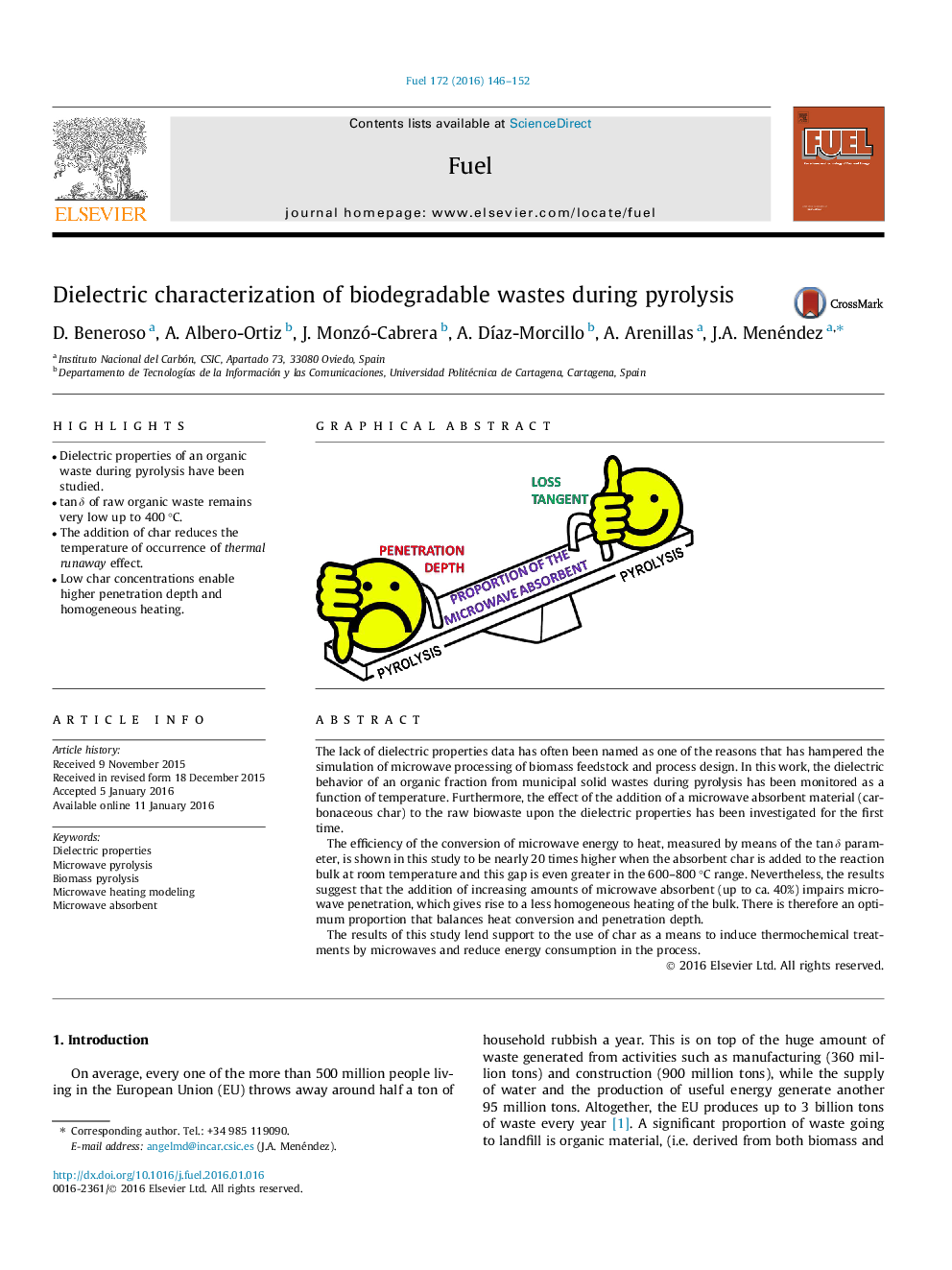| Article ID | Journal | Published Year | Pages | File Type |
|---|---|---|---|---|
| 205195 | Fuel | 2016 | 7 Pages |
•Dielectric properties of an organic waste during pyrolysis have been studied.•tan δ of raw organic waste remains very low up to 400 °C.•The addition of char reduces the temperature of occurrence of thermal runaway effect.•Low char concentrations enable higher penetration depth and homogeneous heating.
The lack of dielectric properties data has often been named as one of the reasons that has hampered the simulation of microwave processing of biomass feedstock and process design. In this work, the dielectric behavior of an organic fraction from municipal solid wastes during pyrolysis has been monitored as a function of temperature. Furthermore, the effect of the addition of a microwave absorbent material (carbonaceous char) to the raw biowaste upon the dielectric properties has been investigated for the first time.The efficiency of the conversion of microwave energy to heat, measured by means of the tan δ parameter, is shown in this study to be nearly 20 times higher when the absorbent char is added to the reaction bulk at room temperature and this gap is even greater in the 600–800 °C range. Nevertheless, the results suggest that the addition of increasing amounts of microwave absorbent (up to ca. 40%) impairs microwave penetration, which gives rise to a less homogeneous heating of the bulk. There is therefore an optimum proportion that balances heat conversion and penetration depth.The results of this study lend support to the use of char as a means to induce thermochemical treatments by microwaves and reduce energy consumption in the process.
Graphical abstractFigure optionsDownload full-size imageDownload as PowerPoint slide
